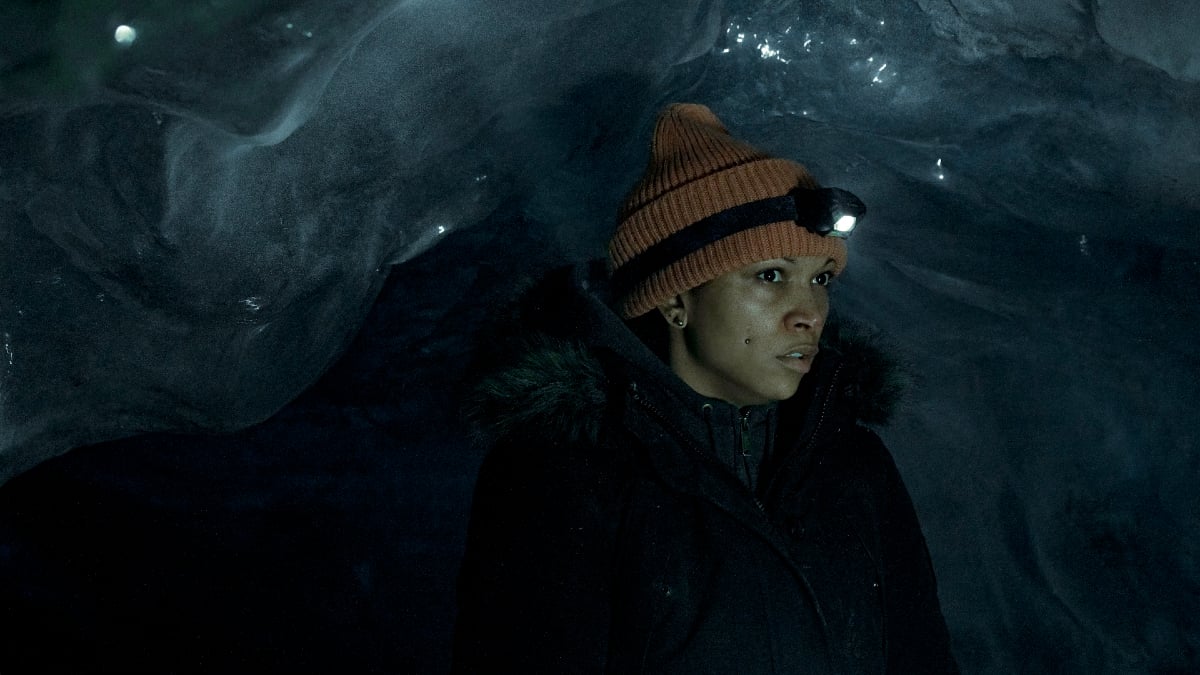True Detective: Night Country answered several of our lingering questions in the season finale, while a few others were either left unanswered or ambiguous. That includes what ultimately happens to Evangeline Navarro, played in the series by Kali Reis.
Navarro spends much of Night Country caught between two realities—not unlike the story itself. There’s her Iñupiat background with its spirituality and belief in the afterlife and supernatural entities, and there’s the literal world of Ennis and Liz Danvers (Jodie Foster) and mental illness. Navarro and her sister Julia lost their mother to mental illness, and that same mental illness eventually drove Julia to take her own life. Throughout season 4, Navarro hears voices and communicates with spirits in strange visions, but she’s not sure if any of it is real—an extension of her spirituality—or if the voices calling her to walk out onto the ice and disappear are a symptom of her mental illness, driving her to commit suicide.
By the end of “Part 6,” Navarro has found a certain kind of peace. Having walked on the other side, she finally receives her Iñupiat name from her mother—Siqiññaatchiaq, “the return of the sun after the long darkness”—and returns to rescue Danvers from almost drowning in the freezing water. Stuck inside the Tsalal research station without electricity, Danvers makes Navarro promise that if she ever does decide to disappear, as she’s been determined to do from the beginning, that she’ll try to come back.
When Danvers is being interviewed by federal agents at the end of the finale, they ask what happened to Navarro, who hasn’t been seen since that night. Danvers tells them she’s not sure, but that she doesn’t think Navarro will be found out on the ice. Meanwhile, we see a montage: Danvers goes to Navarro’s house, which Navarro has abandoned, and finds Holden’s one-eyed stuffed polar bear and Navarro’s phone with Raymond Clark’s confession about Annie K.’s murder and the pollution from Silver Sky Mining. Qavvik finds his SpongeBob SquarePants toothbrush, which Navarro teased him about. And then we see Danvers walk out onto a sun-drenched balcony overlooking a lake. As she sits, she’s joined by Navarro—we only see them from behind, but the two share a look, and that’s that.
It’s unclear if Navarro is still alive and has managed to carve out an anonymous life for herself, or if she walked out onto the ice like her sister, and this is her spirit visiting with a newly open-minded Danvers. In an interview with the Los Angeles Times, creator, co-writer, and director Issa López says, “it’s up to you to decide”:
I think that the entire series has two readings. One of them is that everything is connected to the supernatural. The other one is there’s absolutely nothing supernatural happening. The dark brings its own madness and neurosis to some characters. The men walking onto the ice — you can go with they froze to death in a flash freeze and they had paradoxical undressing and delirium because of hypothermia. Or [you can believe] they walked onto the ice, and faced the thing they woke up by being in the wrong place. It’s up to you to decide which one of those readings you are going to embrace.
Navarro asks in the series, “Don’t you ever feel that you just want to go and walk away and never come back?” She talks about getting calls from something that has called the women in her family for generations. She’s terrified. In the climax of Episode 6, shegoes into the darkness on the ice. When she finally surrenders to [the calls], in peace, she receives a piece of herself that she was missing: her name. That part of her is complete.
The part of her that wants to just go away is still there. Danvers says, “If you ever go, please come back.” In the very last part of the episode, we see her at peace. It’s up to her to decide if she goes on a walkabout to find herself and come back, as Danvers asks, or if she goes to be with the other women in peace, and is visiting as an apparition. It’s up to you to decide which one of the two it is. I have my version, but I’m not going to tell you.
Ambiguous endings can be frustrating to some viewers, but this conclusion fits with López’s approach to Night Country, a place where the veil between worlds is thin, and where the supernatural and our reality co-exist.
(featured image: HBO)










Published: Feb 19, 2024 04:23 pm